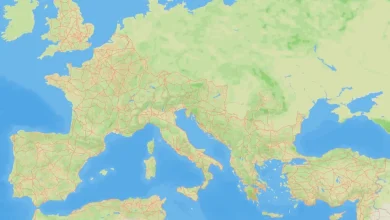No Kings was the largest protest in US history. It was also embarrassingly irrelevant

“I’m not a king… I’m not a king at all”. Donald Trump could be forgiven for being baffled at the “No Kings” protests that took place across America at the weekend. A sequel to the first and equally feckless demonstrations held in June, they involved what the organisers claimed to have been 7 million Americans, potentially making them the largest protests in American history.
Appearing to skew Boomer or above in age, they faintly recalled the anti-Vietnam War protests that some participants might very well have attended six decades ago. But unlike those popular, persistent, and issue-focused events, only a few days after “No Kings” hardly anyone seems to remember or care that they happened at all.
For all the participants’ bile and determination, the event unfolded as a vulgar, cranky carnival of disgruntled old people holding signs with saucy slogans, dressing up in bizarre costumes, and carrying the occasional American flag upside down, a traditional indication of distress. “No Kings” has no obvious leaders, no coherent political programme or action plan, no clearly defined next steps, and not even a hint of another date for a third such demonstration. Apart from a disdain for Trump and personal endorsements by some Democratic leaders, it has no discernible ideology, no community, and little else that could define it as a movement.
Even the “No Kings” branding suffers from a fatal flaw in logic, for if America truly had a powerful authoritarian ruler, then surely his subjects would, as any anti-Putin Russian citizen could readily assure us, not have the freedom to protest against him en masse within steps of his home. Yet that is exactly what happened, with multiple city police forces announcing that no arrests were made in a country that indisputably has – under Trump – the world’s strongest protections of free speech and expression. Indeed, some participants who gave videoed interviews appeared to have difficulty defining what a “king” is, while others were hard-pressed to state precisely any reasons why they oppose Trump.
The protestors confirmed this logical chasm by creating post after post and meme after meme congratulating themselves for having defied a supposed “tyrant” who spent the afternoon playing golf in Florida while they had their say on the streets. Indeed, the most meaningful and widely circulated meme was Trump’s own, released later on Saturday, which showed an AI version of the president wearing a crown while piloting a fighter jet that drops piles of excrement on protestors in New York.
In a collective self-own, the video was mostly circulated by outraged “No Kings” supporters themselves, whose posts invariably accompanied it with scolding, schoolmarm-grade comments featuring such words of clinical reproach as “inappropriate”, along with attempts to gaslight the American public into believing that Trump’s video simply wasn’t funny.
At the same time, there was little hint of self-reflection on the protestors’ part. Despite the “No King” website declaring “a commitment to nonviolent action”, some participants were filmed or photographed advocating Trump’s death, and clashing with counterdemonstrators. And for all the supposed urgency of the demonstrations, by mid-afternoon the protestors were largely gone. In the end, all they succeeded in doing was draining themselves of energy that could have gone into practical measures to oppose policies to which they object.
Meanwhile, the news cycle swiftly moved on. On Sunday, Bolivia’s elections ended nearly 20 years of Leftist rule in a final vote between two strongly pro-American candidates. On Monday, Trump received Anthony Albanese, the Australian prime minister, at the White House, where they signed a joint agreement to develop a multibillion-dollar critical mineral and rare earth element enterprise that will challenge Chinese global market domination. Tuesday saw US stocks hit all-time highs on the strength of strong corporate earning reports, while a Reuters/Ipsos poll revealed that Trump’s approval rating increased over the weekend, from 40 to 42 points.
And, in what “No Kings” protestors may well have taken as an especially strong rebuke, a federal judge ruled that Trump’s controversial deployment of National Guard troops to Portland, Oregon, is legal and can continue. Perhaps we will see the protestors again, but their wheels are spinning in a world that has no regard for them.
Paul du Quenoy is a historian and president of the Palm Beach Freedom Institute





